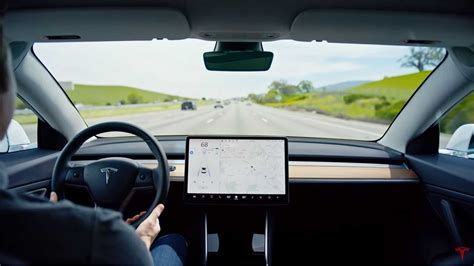Tesla’s ambition to lead the future of autonomous driving has predominantly been characterized by a singular reliance on vision-based technology. Elon Musk’s vision for Tesla, pun intended, emphasizes the use of cameras and rigorous software algorithms to replace traditional, and arguably archaic, hardware sensors. A notable example of this is Tesla’s auto-wiper feature, which relies purely on video input from the Tesla Vision system rather than dedicated rain sensors. This choice has opened up a floodgate of debates and criticisms, especially in online forums where users have vocally shared their concerns and experiences.
Human drivers utilize an array of senses—vision, hearing, touch, and even smell—to navigate and respond to the changing dynamics of the road. Each sense acts as a layer of redundancy; should one fail, the others provide critical backup. Tesla, in its pursuit of technological elegance, seems to have banked on the idea that if humans can drive with vision, so can machines. As pointed out by commenter TaylorAlexander, this rationale falters when you consider that human vision is supported by a brain capable of processing vast amounts of data in real-time—a feat current machine learning models are still striving to perfectly emulate.
There is also a perspective that Tesla’s vision-only approach is a cost-cutting measure. Schrneems commented that the narrative of ‘humans can do it with vision’ is more of a marketing spin than a solid engineering principle. By forgoing radar, ultrasonic sensors, and other traditional elements, Tesla aims to minimize production costs and streamline manufacturing processes. This strategy perhaps works in theory but invites severe practical challenges. Cost-effective decisions could lead to compromises, particularly concerning basic yet critical features like auto-wipers, which numerous users report as being ineffective in real-world conditions.
The debate doesn’t stop at functionality but extends to safety. A comment by UniverseHacker highlighted the risky nature of deploying unproven technologies in production vehicles. When envisioning ‘Full Self-Driving’ capabilities, the car must accurately perceive and respond to its environment under all conditions. Relying only on vision can leave gaps, especially under adverse weather conditions where visibility is compromised. Unlike human drivers who can sense rain by feeling and hearing it, vision-based systems lack this multi-sensory input, making them inherently limited.
Moreover, the issue of public beta-testing has also been a contentious topic. Tesla owners essentially become guinea pigs, testing functionalities like auto-wipers in real-world scenarios. While continuous software updates can improve performance over time, it places the immediate risk on the user. A solution like a $5 rain sensor is not only well-established but also highly reliable. The sentiment expressed by users like SkyPuncher and others indicates frustration over Tesla’s refusal to implement such established technologies while simultaneously pushing boundaries with less mature and robust solutions.
In conclusion, Tesla’s bold move to replace traditional sensors with vision-based systems in features like auto-wipers is part of a larger strategy to revolutionize automotive technology. But revolutions are rarely smooth. The lack of dedicated rain sensors and reliance on video input has shown significant discrepancies between theory and practice. Tesla’s approach exemplifies a broader trend where innovation sometimes overlooks simple, effective solutions in the quest for technological purity. The question remains whether the vision-only approach can be fine-tuned to meet the high expectations of safety, reliability, and user satisfaction or whether Tesla will need to reevaluate and incorporate a hybrid model that leverages the best of both worlds.


Leave a Reply